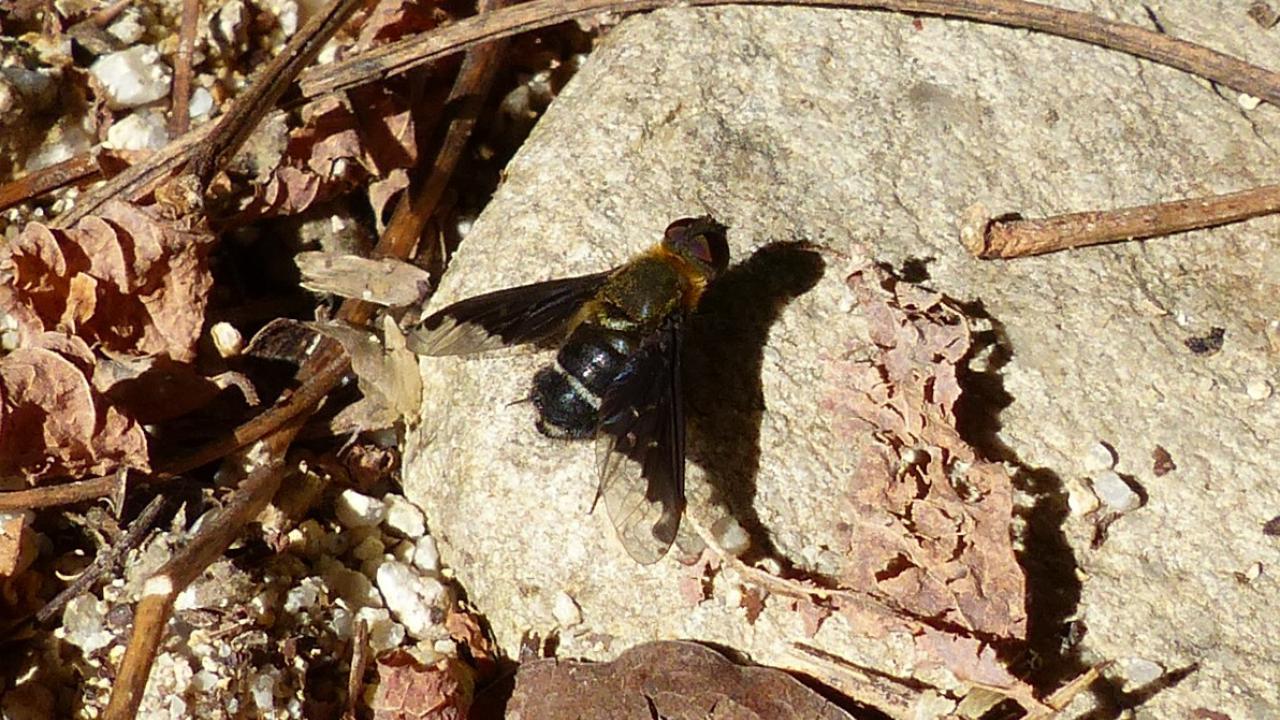Description:
Bee-flies superficially resemble bees and this may offer the adults some protection from predators.
Adults generally feed on nectar and pollen, but the larvae of the bee-flies are predators (or parasitoids) of the eggs and larvae of other insects.
Bee-flies are often recognizable by their stocky shapes, by their hovering behavior, and for the particular length of their mouthparts and/or legs as they lean forward into flowers.
Unlike hoverflies, which settle on the flower as do bees and other pollinating insects, those bee-fly species which have a long proboscis generally feed while continuing to hover in the air.
Bee-fly species with shorter proboscis do land and walk on flower heads, and can be much harder to distinguish from hoverflies in the field.
Many bee-fly species spend regular time intervals at rest on or near the ground, while hoverflies hardly ever do so.
Melnik, Bulgaria, 28 July 2017


